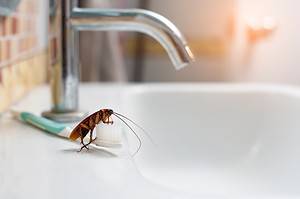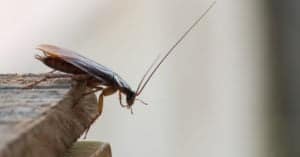Cockroaches don’t usually top folks’ favorite animal lists, but they are fascinating creatures capable of surviving where many life forms could not. The roaches we see most often are the American and German cockroaches, but they are just two of the 4,500 types of cockroaches living worldwide. Here are the five largest cockroaches in the world. It’ll make you appreciate the small ones!
What Do Giant Cockroaches Eat?
Cockroaches are insects that eat pretty much anything, including dead organic matter, so they are classed as omnivores and, specifically, a type of detritivore. They are part of the world’s clean-up system. Without them and other detritivores like woodlice, the world would fill up with dead stuff. Unfortunately, most cockroaches carry diseases that make humans ill, so they aren’t welcome in our homes.
Did you know cockroach ancestors scuttled around the Carboniferous Period’s jungle floors over 320 million years ago? Their ancestors are known by the magnificent name ‘roachoids’.
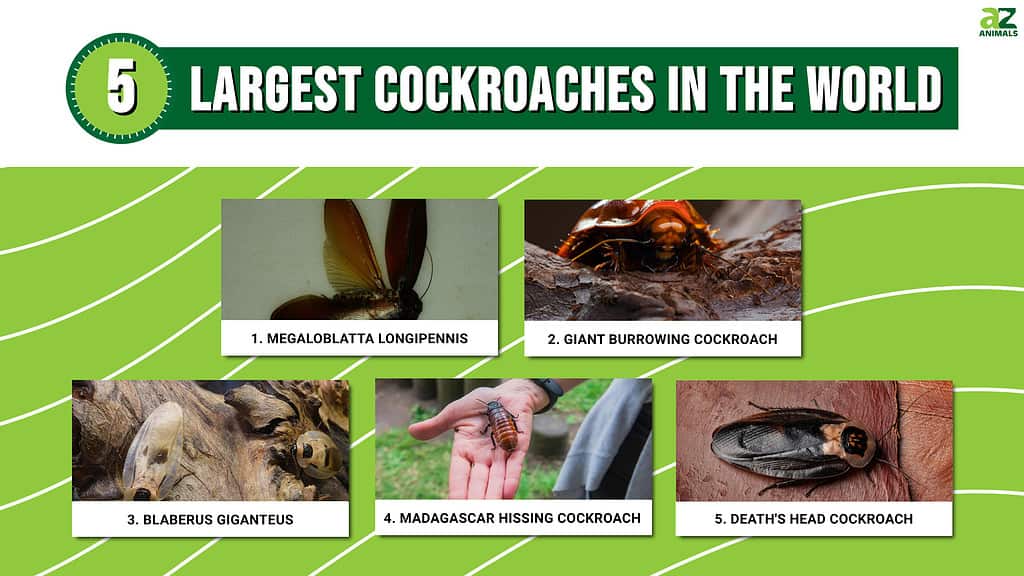
Average Cockroach Size
The average cockroach size is 1.6 inches.
The most common U.S. species are the American (Periplaneta americana) and the German (Blattella germanica) cockroaches, and most of them are about the size of your thumbnail, but here are some of the largest cockroaches in the world that’ll have you sleeping with the lights on.
1. Megaloblatta Longipennis
Let’s have a good laugh at the name before we move on!
The largest cockroach in the world by length and wingspan is Megaloblatta longipennis. It reaches epic lengths of 3.5 inches long by 1.5 inches wide, and it has an 8-inch wingspan. That’s enough body length to cover the average adult’s palm. This monster roach is native to Peru, Panama, and Ecuador.
This enormous dark brown cockroach is a species in the Ectobiidae family, and it’s the largest cockroach species by length and wingspan. It’s nocturnal, like most cockroach species, and enjoys moist, damp environments, so it lives in damp vegetation and eats the decaying matter found there. Fortunately, this mega-sized insect isn’t attracted to homes!
According to the Guinness World Records, the largest specimen on record is a female measuring 3.8 inches long and 1.75 inches wide. You can find this mammoth cockroach in the collection of Akira Yokokura of Yamagata, Japan.
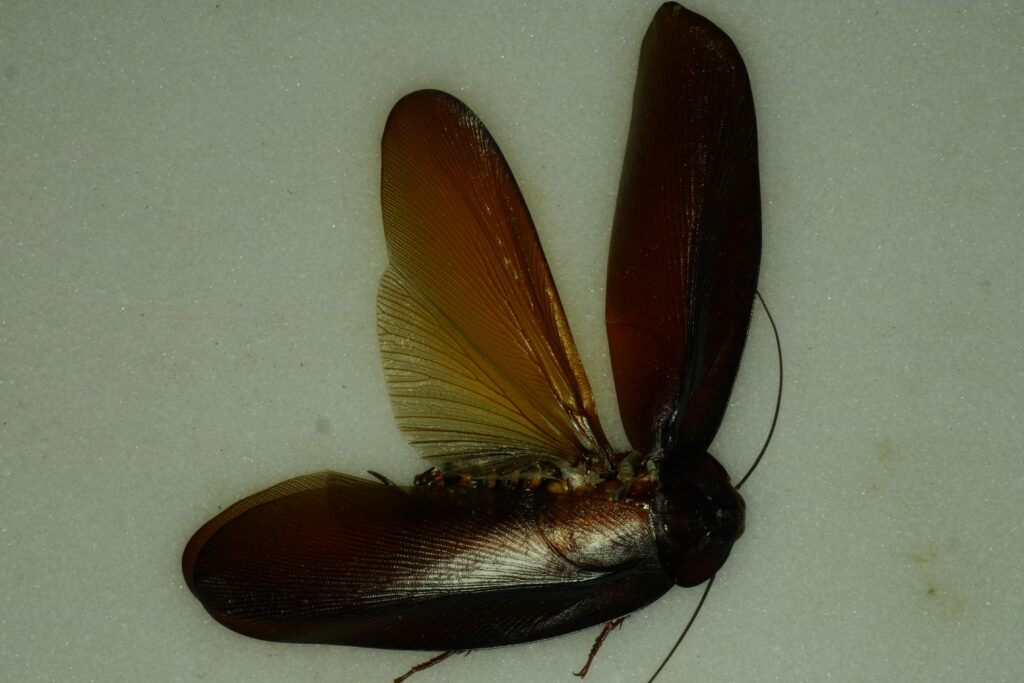
is the largest cockroach in the world, reaching 3.5 inches in length and supporting an 8-inch wingspan.
©4,592 × 3,064 pixels, file size: 6.43 MB, MIME type: image/jpeg – License
2. Giant Burrowing Cockroach
The giant burrowing cockroach has another name: the rhinoceros cockroach! That’s a good giveaway to its size!
Macropanesthia rhinoceros is the second-largest cockroach in the world and the heaviest overall cockroach species. Adults reach just under 3.1 inches long and weigh 1.5 ounces. That’s about the same weight as one and a half slices of whole-meal bread!
The giant burrowing cockroach is native to tropical and subtropical Australia, particularly Queensland’s dry eucalyptus forests. These giant roaches live solitary lives in permanent burrows, digging them out to lengths of 3.5 feet with their forelegs and only leaving to eat and find a mate. This is the only cockroach species that lives in a permanent burrow.
Their preferred food is decaying foliage, which they like to drag back to their burrows and eat at leisure. Researchers have spotted these epic roaches climbing trees (they don’t have wings), and they sometimes enter houses in search of food. However, they are not considered pests.
Giant burrowing cockroaches are quite aggressive and protective over their burrows. They’ve been spotted butting and shoving other roaches to prevent them from entering their homes. When they fight, they produce a hissing noise.
Macropanesthia rhinoceros is the largest cockroach in Australia, and it’s a handsome species with its brown-black glossy exoskeleton. Its good looks make it a popular pet!
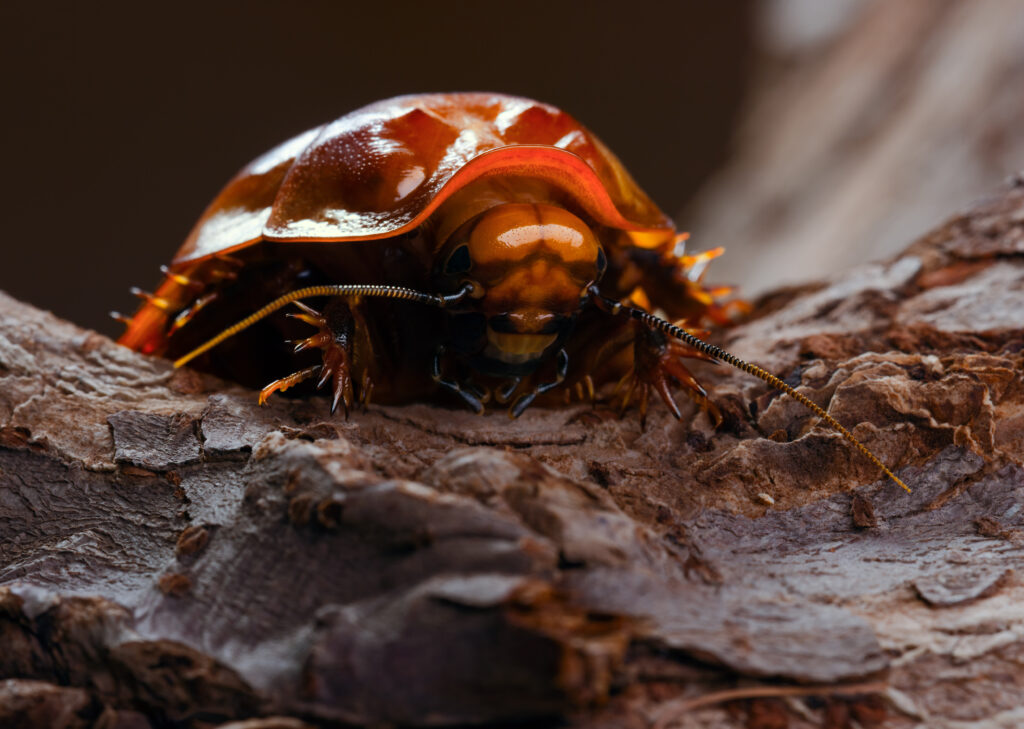
The giant burrowing cockroach is the heaviest of the cockroach species, weighing 1.5 ounces.
©skydie/Shutterstock.com
3. Blaberus giganteus
Blaberus giganteus is better known by its common name, the Central American giant cave cockroach.
It’s one of the largest cockroaches in the world, with females reaching over three inches in length with a six-inch wingspan. These huge cockroaches like damp and dark environments, so they live in tree hollows, rock cracks, and caves, as the name suggests!
They are nocturnal omnivores that prefer decaying leaves but will also eat bat poop (handily dropped on them from cave roofs!), carrion, and fruit too. They look a little different from other cockroach species because their bodies are leaner and pale tan in color with irregular black splotches.
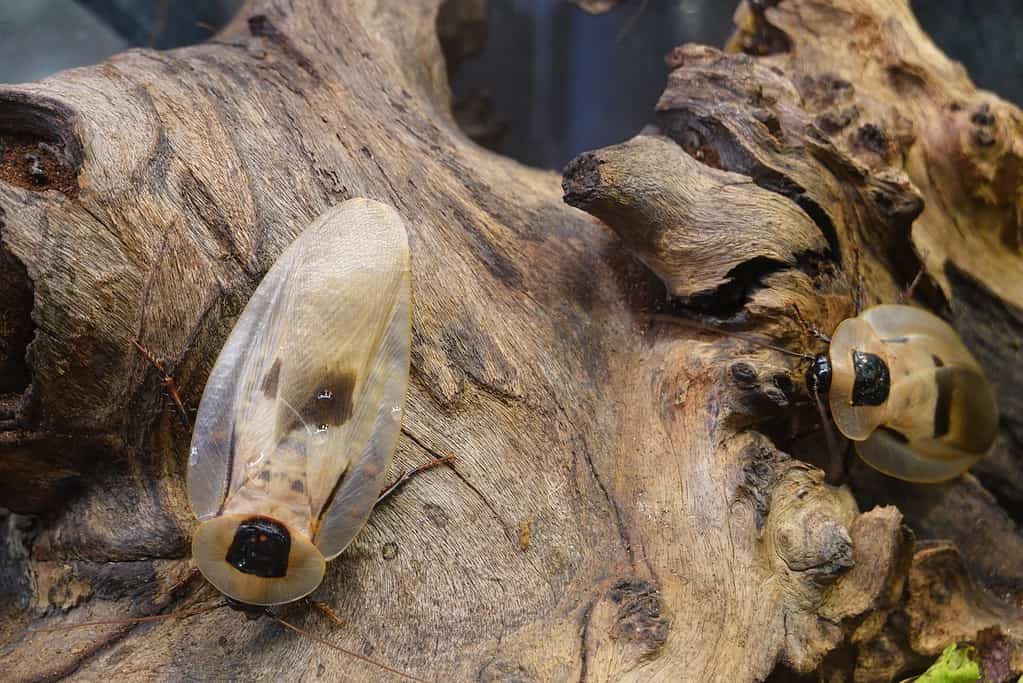
The Central American giant cave cockroach prefers damp, dark environments.
©LifeisticAC/Shutterstock.com
4. Madagascar Hissing Cockroach
Madagascan hissing cockroaches are endemic to Madagascar off the African coast. They are giants at three inches long and one inch wide.
Many species of cockroaches hiss, but this dark brown beauty is the hissing master. They emit long, loud hissing noises through abdomen holes to scare away predators such as birds, lemurs, and chameleons. Hissing also warns colony members of the danger. Male Madagascar hissing cockroaches also hiss to attract mates. The louder, the better, as far as lady cockroaches are concerned!
Madagascar’s tropical rainforests are perfect for cockroaches who love damp leaf litter. This type of environment provides masses of dead and decaying foliage, decomposing creatures, and enough water to sustain whole colonies of roaches.
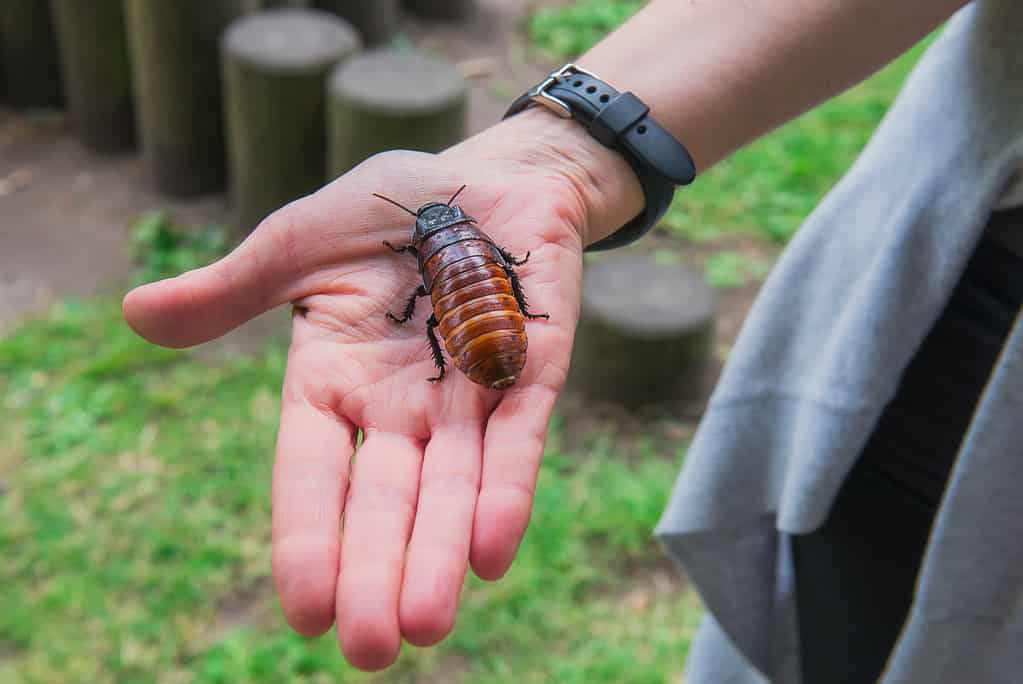
The Madagascar hissing cockroach emits long, loud hissing noises through abdomen holes to scare away predators.
©iStock.com/OKrasyuk
5. Death’s Head Cockroach
Death’s head cockroaches (Blaberus craniifer) are feared due to their unfortunate name, but they are not an omen of death. The name refers to the skull-like image on their dorsal plates! This image is much admired by cockroach keepers who keep them as pets.
These roaches are not the largest in the world, but they are still a hefty two inches long and one inch wide, so they are still much larger than cockroaches you might spot at home.
Death’s head cockroaches are native to Africa, but they turn up in lots of places because they are excellent at hiding in luggage and on trade boats. They love warmth, and unlike other cockroaches on this list, they are attracted to light.
These roaches are the tough guys of the cockroach kingdom. They don’t scramble for cover when the lights turn on but stand their ground and hiss. African traditional rituals include this brave cockroach as a guard against evil spirits due to its brave attitude.
Like other roaches, they eat decaying organic matter, mostly decaying plants, but will eat carrion, paper, and anything that contains organic traces.
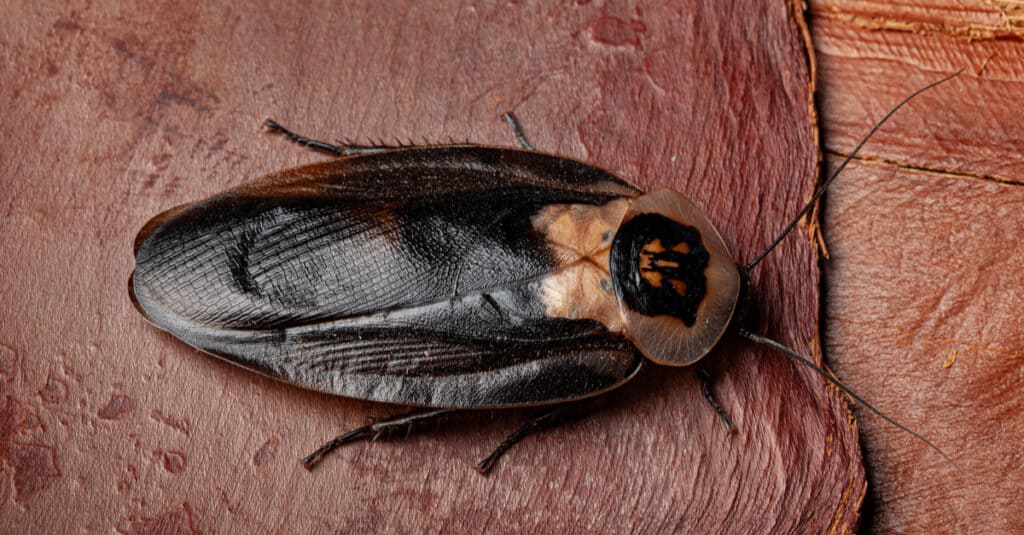
The Death’s Head cockroach gets its name from the skull-like image on its head.
©K Hanley CHDPhoto/Shutterstock.com
What if There Were No Cockroaches?
Some people would rejoice in a world without giant cockroaches, but they are important for the ecosystem. We’ve discovered that they eat decaying matter, cleaning up what might otherwise take years to decompose and cause a rotting health hazard. In the wild, they are an important food source for birds, mammals, and even humans who eat them for their protein-rich bodies!
How Long Can Cockroaches Go Without Food?
Cockroaches are tough creatures, and the largest cockroaches in the world can go without food for six months by minimizing their activities. Water is another matter, though; cockroaches can live longer than many mammals without a drink, but after two weeks, they will begin to shut down.
The World’s Largest Cockroach Is a Colossal 3.5 Inches Long
The largest cockroaches in the world live in South America, Madagascar, and Australia. The amusingly named Megaloblatta longipennis can reach over 3.5 inches long, so it’s the largest of the cockroach species. It’s a native of Peru, Ecuador, and Panama.
Next up, we have the Australian native Macropanesthia rhinoceros, which reaches 3.1 inches long, but it’s the heaviest cockroach species at 1.5 ounces in weight.
Several other large cockroaches include the Central American giant cave cockroach and the Madagascar hissing cockroach, both of which reach an epic 3 inches in length, and let’s not forget the incredible length of the African Death’s head cockroach. This ornamental cockroach reaches around 2 inches long. It’s smaller than the other giant cockroaches, but it stands its ground against predators.
Whether you like them or not, cockroaches are incredibly resourceful animals with a firm place in the world’s ecosystem. The largest cockroaches in the world don’t tend to seek out human habitations but stay hidden on forest floors or dark caves, eating decaying vegetation. Let that put your mind at rest when you turn out the lights tonight!
Summary of the 5 Largest Cockroaches in the World
| Rank | Cockroach |
|---|---|
| 1 | Megaloblatta Longipennis |
| 2 | Giant Burrowing Cockroach |
| 3 | Blaberus giganteus |
| 4 | Madagascar Hissing Cockroach |
| 5 | Death’s Head Cockroach |
The photo featured at the top of this post is © skydie/Shutterstock.com
Thank you for reading! Have some feedback for us? Contact the AZ Animals editorial team.




